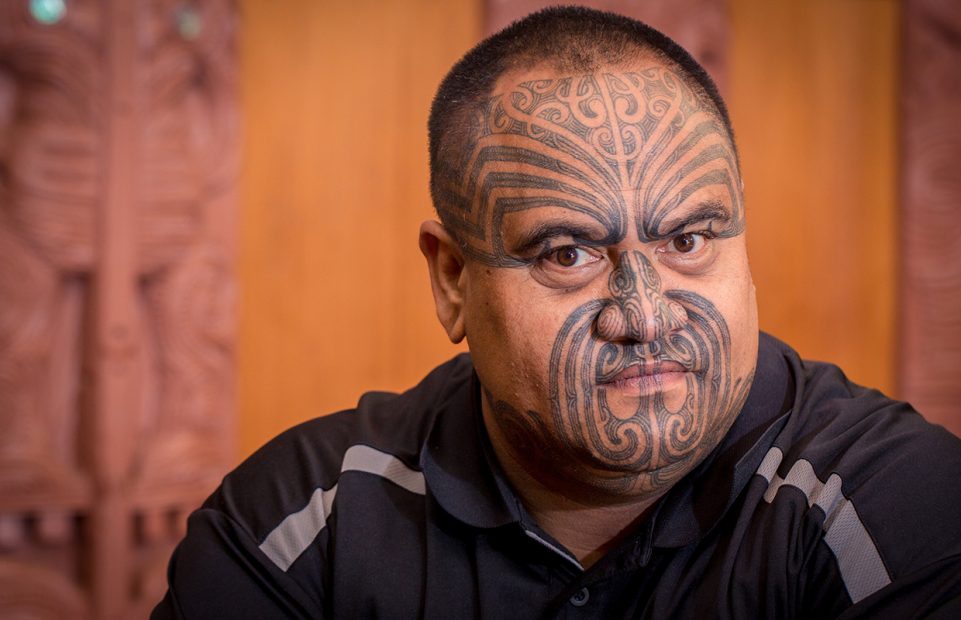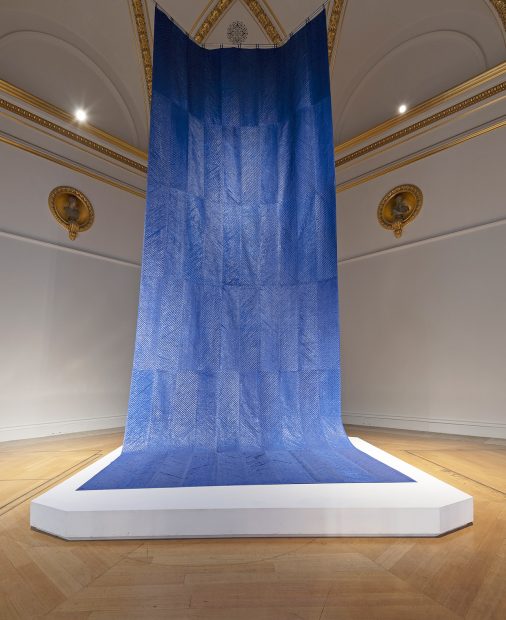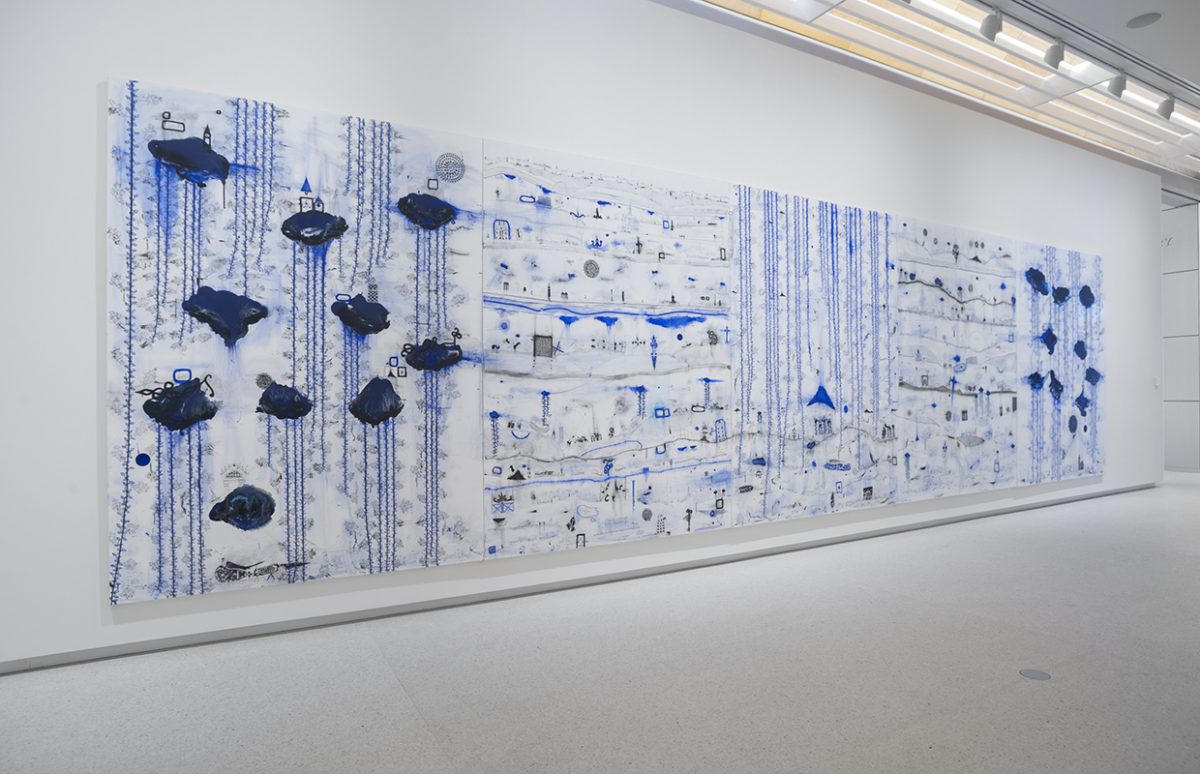The Oceania exhibition that is now on at the Musée du Quai Branly in Paris originated at the Royal Academy of Arts in London. The RA has a number of videos in English online in connection with the exhibition that are excellent for class work on the topic. It would work well with Shine Bright 1e File 12 "Peoples of Oceania".
You might like to introduce the topic with this video mentioned in the Paris exhibition downloadble teaching pack. It's a promotional film calling for future students for the Pacific Institute of Perfoming Arts. It includes dance, costume and a poem simple enough for pupils from A2, with the repeated refrain "We are the sea", and the line "We should not be defined by the smallness of our islands but by the greatness of our oceans.
The RA videos all come subtitled, so are not really appropriate for listening comprehension unless you don’t show the images.
The exhibition includes both photos of contemporary Samoan tattoos, and tattoos on historical artefacts. Tattooing or tā moko both bodies and faces is a traditional ritual amongst the peoples of the South Pacific.

The 5-minute video “Oceania and the Art of Tattooing” is in three sections, which could be used independently or as a single document. The first two sections can be used from B1. The third is more abstract, although the language isn’t difficult. It would require B1-level students to have some prior knowledge of the topic, and would be easily usable at B2.
0-0:50 After a short snippet of Maori tattoo artist Te Rangitu Netana, who speaks at length in the third section, the first part is in slide-show style with onscreen text and some of the artefacts from the exhibition.
0:51-1:30 New Zealand photographer Mark Adams shows some photos of Samoan tattoos that are part of a long-term project he has undertaken. He explains that Samoan tatau artists migrated to New Zealand in the 1970s, bringing their art with them.
1:31-5:15 The longest part in an interview with Te Rangitu Netana, now based in the UK, explaining how he was inspired by Samoan tatau artist Su‘a Sulu‘ape Paulo II to abandon modern tattooing machines and return to the traditional hand-tools and tapping technique and the ritual and philosophy that accompanies them.
A theme of the exhibition – the historic migration of peoples across the Pacific – is developed in both parts two and three. 3:30-4:00 Te Rangitu Netana also discusses cultural appropriation, a very current debate. He says that when Western artists “borrow bits and pieces” from a culture, “It’s like taking the ‘and’ out of the sentence, it doesn’t make sense. In the last minute, he explains that he is convinced there is a place for indigenous beliefs and practices in today’s society.
Crossing the Pacific
The theme of migration across the Pacific is given a lovely, concrete example in this short video, “One family’s Oceania story”. Two strikingly similar carvings were made thousands of miles and hundreds of years apart, in Tahiti and New Zealand. The Maori family who are guardians of the New Zealand carving travelled to London with their carving, and discovered its “twin”, they explain that this is a wonderful confirmation of their oral history and genealogy passed down through generations.
To All New Arrivals
Continuing the theme of voyages and migration, in this 2:20 video, contemporary artist John Pule discusses his monumental and encyclopaedic five-panel painting, ‘Kehe tau hauaga foou (To all new arrivals)’, (which you can see at the top of the page.)
Pule’s family migrated from the small Polynesian island of Niue to Auckland when he was two. His painting contains many references to Polynesian culture, and he explains that visiting the Oceania exhibition has allowed him to see close up many Polynesian works of art that he had only seen in books. But it also has references to many other cultures. He explains, “I wanted the painting to talk about the things that are important to me when people migrate from one country to live in another country. Either they are escaping some burden or some tragedy or some devastation. They leave their homelands to settle in a totally different environment.” Usable from B1.
The Ocean: Moana

In this 3:30 video, the four Maori artists of the Mata Aho Collective discuss their work 'Kiko Moana', which opens the exhibition. An 11-metre weaving using traditional Maori techniques, it is made out of blue tarpaulins, a western import that has become omnipresent in Polynesian communities. The four women in turn explain their inspiration and their working methods. The work’s title means “flesh or body of the ocean” and was inspired by legends of the taniwha (TAN-ee-fa), a mythical sea creature. This video is more suitable from B2 because of the conceptual nature of the discussion. A great extension to this work is the accompanying website, which has written testimonies of different people in the artists’ communities on the meaning of taniwha for them.
Copyright(s) :
Kehe tau hauaga foou (To all new arrivals),
John Pule, 2007,
Nouvelle - Zélande,
émail, huile, crayon, pastel, huile et encre
sur toile, cinq panneaux, 270 x 200 cm
chacun,
© John Pule
© Auckland Art Gallery Toi o T maki
Cinzia Jonathan/Pure New Zealand
Kiko Moana, Nouvelle Zélande 2017,
Polyéthylène et fil de coton, 4 × 11 m
© Collectif Mata Aho
© Royal Academy of Arts, London
photo Marcus J. Leith
Tag(s) : "art" "cultural appropriation" "exhibition" "Maori" "migration" "New Zealand" "ocean" "Oceania" "Polynesia" "Samoa" "Shine bright 1e" "Tahiti" "tattoos" "video"





